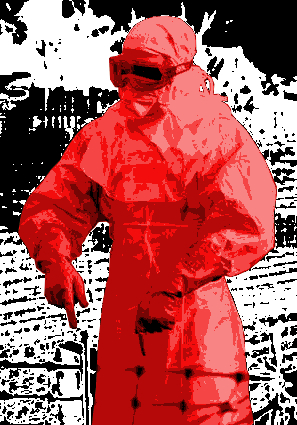No flights mean no fight from Australia
 Foreign Minister Julie Bishop says Australia still cannot send nurses or aid workers to Ebola-affected parts of Africa because there is no evacuation plan.
Foreign Minister Julie Bishop says Australia still cannot send nurses or aid workers to Ebola-affected parts of Africa because there is no evacuation plan.
“I do not have in place a guarantee that should an Australian health worker... contract Ebola, they would be able to be transported or treated in a hospital either in the region or in Europe,” she told reporters in Launceston on Saturday.
Prime Minister Tony Abbott agrees, saying this week that he admired the “selfless humanitarianism” of Australians helping under their own steam but the Australian Government would not send health workers into “harm's way” without a way out.
The Foreign Minister says Australia does not have planes equipped to transport Ebola patients back to Australia and even if it did, the flight time of 30 hours is “clinically and logistically unsafe”.
But the Australian Medical Association has criticised the sluggish response, arguing that Australia has dedicated quarantine and isolation facilities in every state, has already scanned hundreds of arrivals back from Africa, and should be doing more to help at the site of the outbreak.
AMA president Dr Brian Owler says Medecins Sans Frontieres has sent at least 12 Australian doctors to fight Ebola in to West Africa.
He says Australian government workers should be allowed to join US troops and emergency medical teams helping contain the virus.
Australia has provided $18 million for equipment and supplies since the beginning of the outbreak, but any Australia aid workers have had to get to West Africa without government support.
The Government did try to provide funding directly to Medecins Sans Frontieres Australia (MSF, Doctors Without Borders) to back their efforts, but executive director Paul McPhun said the group rejected the $2.5 million because it “would be better spent providing capacity that Medecins Sans Frontieres and other NGOs cannot”.
“Let's be very clear. It's not MSF's role nor should it be to substitute the responsibility of the Australian government or any other state in addressing this (epidemic),” Mr McPhun told AAP.
Meanwhile, researchers at the University of Utah have reported a new drug target for future treatments.
A team of biochemists have produced a molecule (known as a peptide mimic) that displays a functionally critical region of the virus that is universal to all known species of Ebola.
The new tool can be used as a target in the discovery of anti-Ebola drugs which would be effective against all known strains, and likely future strains as well.
The lab-made peptide mimics a highly conserved region in the Ebola protein, which controls entry of the virus into the human host cell to initiate infection.
In experiments so far, the peptide target has been useful for high-throughput drug screens, which allow rapid identification of potential new drugs from billions of possible candidates.
Even the most effective current experimental drugs have only targeted one of Ebola's five species.
“The current growing epidemic demonstrates the need for effective broad-range Ebola virus therapies,” says Dr Tracy Clinton, lead author on the new study.
“Importantly, viral sequence information from the epidemic reveals rapid changes in the viral genome, while our target sequence remains the same. Therefore, our target will enable the discovery of drugs with the potential to treat any future epidemic, even if new Ebola virus strains emerge.”
The University of Utah has linked with pharmaceuticals firm Navigen to seek funding to optimise the inhibitors and further their work towards clinical trials in humans.







 Print
Print